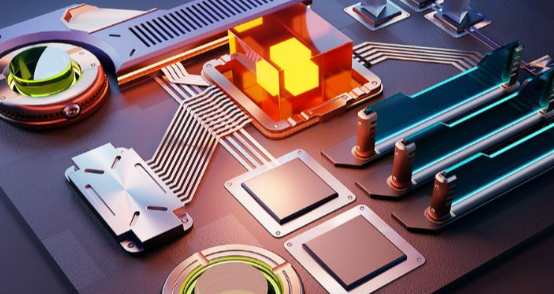
The PCB board has both digital circuit and analog circuit, they should be separated as far as possible, and the ground wire can not be mixed, should be separately connected with the ground wire end of the power supply (the best power end is also separately connected). To maximize the area of the linear circuit. General digital circuit has strong anti-interference ability, TTL circuit noise tolerance is 0.4~0.6V, CMOS digital circuit noise tolerance is 0.3~0.45 times of the power supply voltage, and analog circuit as long as there is microvolt level noise, it is enough to make it work abnormally. So the two types of circuits should be laid out and wired separately.
(3) try to thicken the ground wire
If the ground wire is very thin, the ground potential will change with the change of the current, resulting in interference with the signal of the electronic system, especially the analog circuit part, so the ground wire should be as wide as possible, generally greater than 3mm is appropriate.
(4) The ground wire will form a closed loop
When the PCB board only digital circuit, should make the ground to form a loop, which can significantly improve the anti-interference ability, this is because when the PCB board has a lot of integrated circuits, if the ground wire is very fine, will cause a large ground potential difference, and the ring ground wire can reduce the ground resistance, thereby reducing the ground potential difference.
(5) ground of the same level circuit
The ground point of the circuit of the same level should be as close as possible, and the power filter capacitor of the circuit should also be connected to the ground point of the level.
(6) The connection of the general ground wire
The general ground wire must be connected step by step from weak current to strong current in strict order of high frequency, medium frequency and low frequency. High frequency part of the best use of large area enclosed ground wire, to ensure a good shielding effect.
6, PCB board anti-interference design
For the electronic system with microprocessor, anti-interference and electromagnetic compatibility must be considered in the design process, especially for the system with high clock frequency and fast bus cycle. Systems containing high-power, high-current drive circuits; System with weak analog signal and high precision A/D conversion circuit. The following measures should be considered to increase the anti-EMI capability of the system:
(1) Choose a microprocessor with low clock frequency
As long as the controller performance can meet the requirements, the lower the clock frequency, the better, the lower the clock can effectively reduce the noise and improve the anti-interference ability of the system. As square waves contain various frequency components, their high frequency components are easy to become noise sources. In general, the high frequency noise of 3 times the clock frequency is the most dangerous.
(2) Reduce the distortion in signal transmission
When high-speed signal (signal frequency = rising edge and falling edge fast signal) is transmitted on the copper film line, the signal will be distorted due to the influence of inductance and capacitance of the copper film line. When the distortion is too large, the system will be unreliable. It is generally required that the signal is transmitted on the PCB board with the copper film line as short as possible and the number of holes as small as possible. Typical value: length not more than 25cm, hole number not more than 2.

(3) Reduce the cross interference between signals
When a signal line has a pulse signal, it will cause interference to another weak signal line with high input impedance. At this time, it is necessary to isolate the weak signal line by adding a grounded contour line to surround the weak signal, or increasing the distance between lines. Interference between different levels can be solved by increasing the power supply and ground layer.
(4) Reduce the noise from the power supply
When the power supply provides energy to the system, it also adds its noise to the power supply system. The reset, interrupt and other control signals in the system are most susceptible to interference from external noise. Therefore, capacitance should be appropriately increased to filter out the noise from the power supply.
(5) Pay attention to the high frequency characteristics of PCB board and components
In the case of high frequency, the distributed inductance and capacitance of the copper film wire, pad, through hole, resistor, capacitor and connector on the PCB board cannot be ignored. Due to the influence of these distributed inductances and capacitors, when the length of the copper film line is 1/20 of the signal or noise wavelength, there will be an antenna effect, which will cause electromagnetic interference to the inside and emit electromagnetic waves to the outside. In general, the hole and pad will produce 0.6pF capacitance, an integrated circuit package will produce 2-6pf capacitance, a PCB board connector will produce 520mH inductance, and a DIP-24 socket will have 18nH inductance, these capacitance and inductance have no effect on low clock frequency circuit, Attention must be paid to circuits with high clock frequencies.
(6) component layout should be reasonable partition
The problem of anti-electromagnetic interference should be fully considered when the components are arranged on the circuit board. One of the principles is that the copper film line between each component should be as short as possible. In terms of layout, the analog circuit, digital circuit and the circuit that produces large noise (relay, large current switch, etc.) should be separated reasonably, so that the signal coupling between them is minimal.









